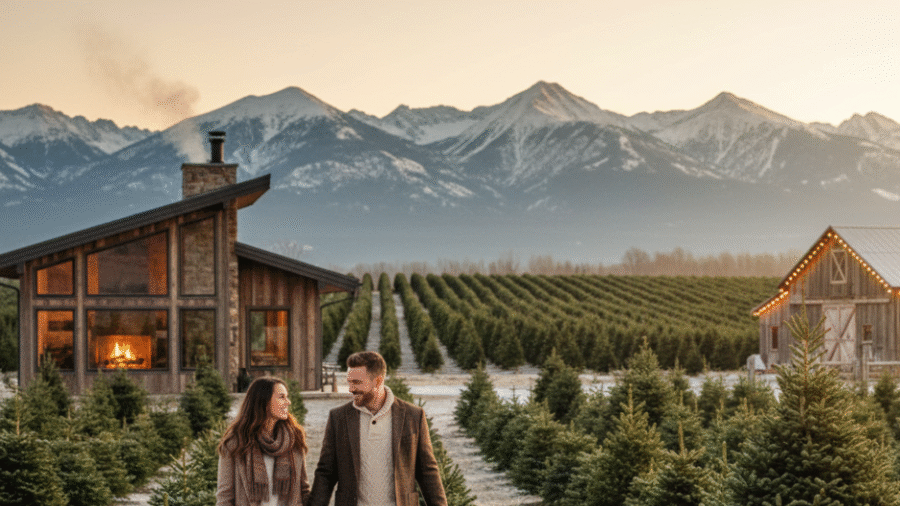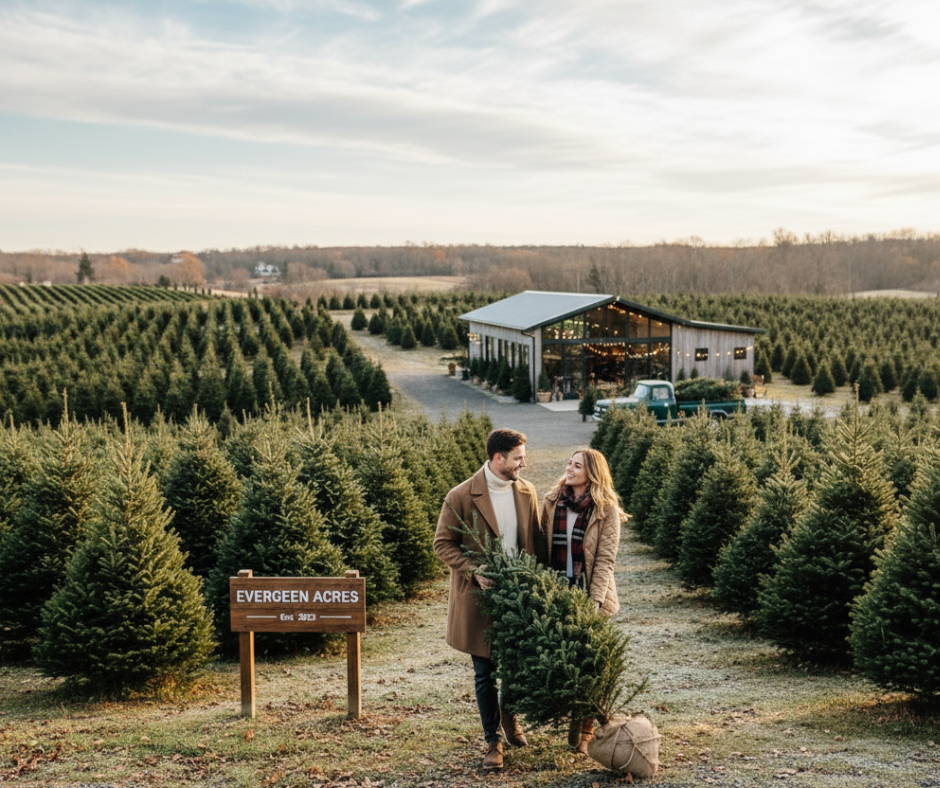In the heart of the holiday season, few traditions evoke the festive spirit quite like picking out the perfect Christmas tree from a Christmas tree farm. Whether it’s the fresh scent of pine, the rustic charm of rural landscapes, or the joy of a family outing, visiting a Christmas tree farm creates memorable experiences and completes your holiday preparations.
As Christmas 2025 approaches, understanding what to expect from Christmas tree farms, how to choose the right tree, and the growing trends around sustainable and farm-to-home practices can elevate your festive season. This comprehensive guide explores everything you need to know about Christmas tree farms for a joyful, meaningful holiday.
What is a Christmas Tree Farm?
A Christmas tree farm is a cultivated land where different species of evergreen trees, like fir, spruce, and pine, are grown specifically for use as Christmas trees. These farms nurture trees over several years, providing customers an opportunity to select and often cut their own tree fresh from the ground.
Christmas tree farms offer a sustainable and environmentally friendly option compared to artificial trees, allowing you to experience the beauty and freshness of a natural tree while supporting local agriculture.
History of Christmas Tree Farms
The tradition of cutting Christmas trees dates back to 16th-century Europe, but the commercial Christmas tree farm system began in the United States during the early 20th century. Farmers started cultivating trees not only for timber but also for seasonal sale, recognizing growing urban demand.
Since then, Christmas tree farming has become a vital agricultural industry, spreading across many regions, each offering different tree types suited to various climates and preferences.
Popular Types of Christmas Trees Grown on Farms
Common Christmas tree species available on farms include:
-
Fraser Fir: Known for its pleasant aroma, needle retention, and sturdy branches.
-
Noble Fir: Beautiful blue-green color with strong branches ideal for heavy ornaments.
-
Douglas Fir: Classic pyramid shape with soft needles and sweet scent.
-
Balsam Fir: A traditional choice with a rich fragrance.
-
Scotch Pine: Durable needles that retain color well.
-
Colorado Blue Spruce: Attractive blue needles, adding color variety.
Each type has unique characteristics to consider based on aesthetic preferences and allergenic considerations.
Benefits of Choosing a Christmas Tree Farm
-
Freshness: Trees cut fresh stay vibrant longer compared to store-bought ones.
-
Sustainability: Farms often replant trees to maintain ecological balance.
-
Family Experience: Visiting farms encourages outdoor activity and family bonding.
-
Wide Selection: More options for tree size and species than retail lots.
-
Support Local Economy: Purchasing helps farmers and local businesses.
What to Expect When Visiting a Christmas Tree Farm in 2025
-
Tree Selection: Walking or riding through fields to choose your ideal tree.
-
Cut-Your-Own Option: Many farms provide saws and assistance for self-cutting.
-
Pre-Cut Trees: For convenience, pre-cut trees of various sizes are often available.
-
Festive Activities: Some farms host hayrides, hot drinks, petting zoos, and Santa visits.
-
Tree Wrapping: Assistance with baling and securing trees for transport.
Tips for Choosing and Caring for Your Tree at a Christmas Tree Farm
-
Measure your space in advance to select an appropriately sized tree.
-
Check needle retention and scent to ensure freshness.
-
Inspect branches’ flexibility for holding ornaments.
-
After cutting, ensure a fresh cut at the base before placing in water.
-
Keep the tree well-watered and away from heat sources to prolong freshness.
Sustainable Christmas Tree Farming Practices
The environmental impact of Christmas tree farming has improved greatly through:
-
Replanting: For every tree cut, farms plant multiple new trees.
-
Integrated Pest Management: Reducing pesticide use to promote biodiversity.
-
Organic Farming: Some farms avoid chemicals altogether.
-
Carbon Sequestration: Trees absorb CO2 during growth, benefiting the atmosphere.
-
Waste Recycling: Old trees are mulched or composted post-holiday season.
Choosing trees from reputable farms ensures eco-friendly and socially responsible holidays.
Virtual and Online Christmas Tree Farm Services in 2025
For those unable to visit physically, many farms offer digital services, including:
-
Online tree selection with detailed photos and descriptions.
-
Delivery options with guarantees on freshness.
-
Virtual tours and farm experiences.
These innovations broaden access while maintaining tradition.
How to Find a Christmas Tree Farm Near You
Use resources like the National Christmas Tree Association’s website, which maintains a directory of member farms, tools for locating local farms, and helpful guides for tree buyers.
Visit National Christmas Tree Association – Find a Farm for reliable farm listings and additional information.
Decorating Your Tree from the Farm
Bring home your fresh farm tree and decorate with:
-
Natural materials like pinecones, cranberries, or dried citrus.
-
Coordinated ornaments matching your home décor.
-
Energy-efficient LED string lights for sparkle and sustainability.
-
Personalized touches such as family heirlooms or DIY crafts.
Read More: Christmas Lights: Illuminate Your Holiday Season with Timeless Traditions and Modern Trends in 2025
Conclusion
Visiting a Christmas tree farm is a quintessential part of the holiday experience that combines tradition, sustainability, and family fun. By choosing a fresh tree from a reputable farm in 2025, you ensure quality, support local agriculture, and create lasting memories.
From selecting the perfect Fraser fir to enjoying a festive hayride, Christmas tree farms offer much more than trees—they provide a holistic holiday celebration that enriches your season with nature, joy, and community spirit.
Plan your visit early, embrace mindful decorating, and make Christmas 2025 one of the most festive and sustainable yet.



Add a Comment